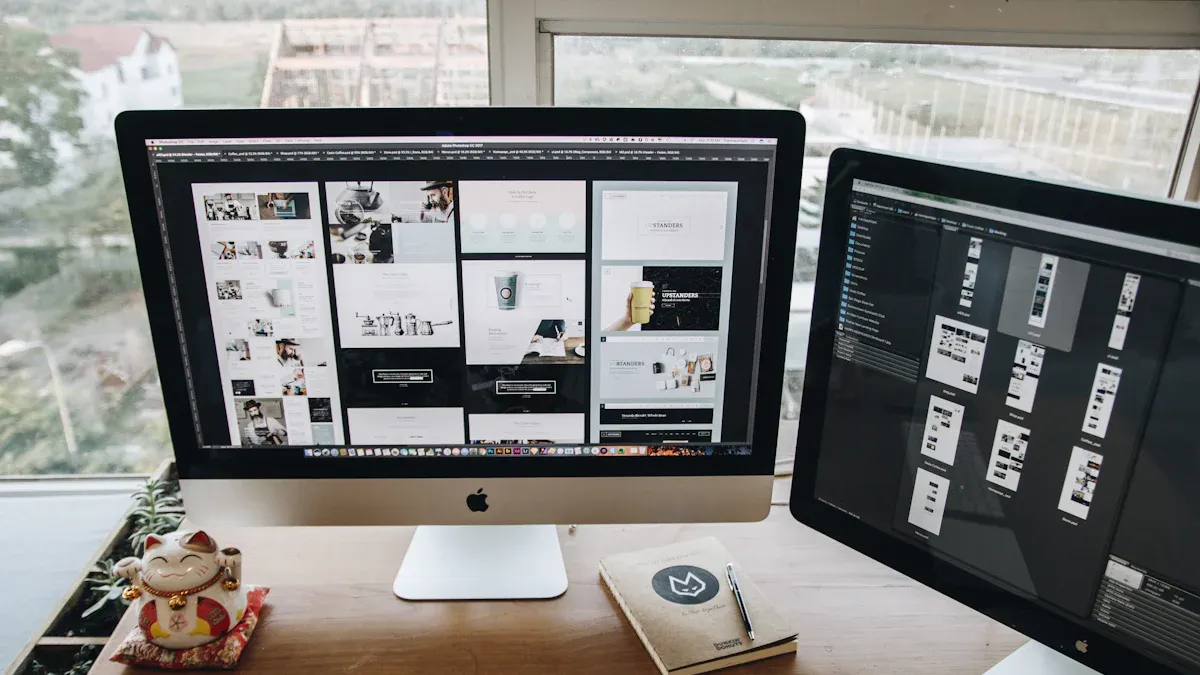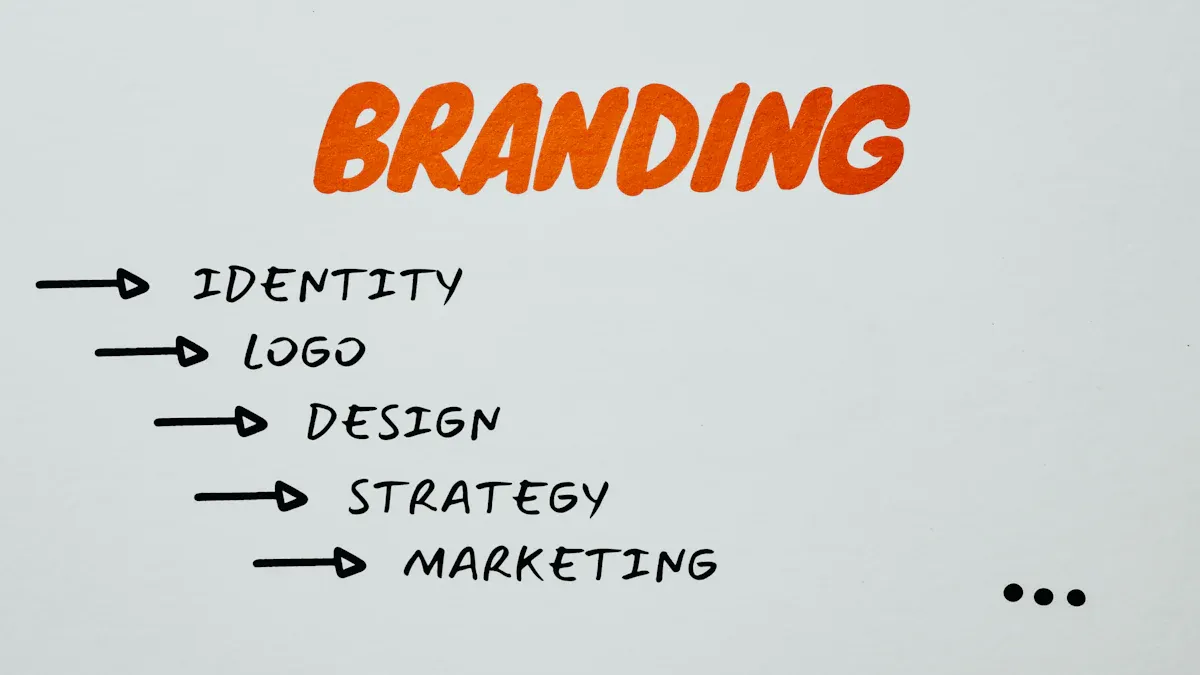
How to Use 3D Rendering for Product Marketing
Table Of Contents
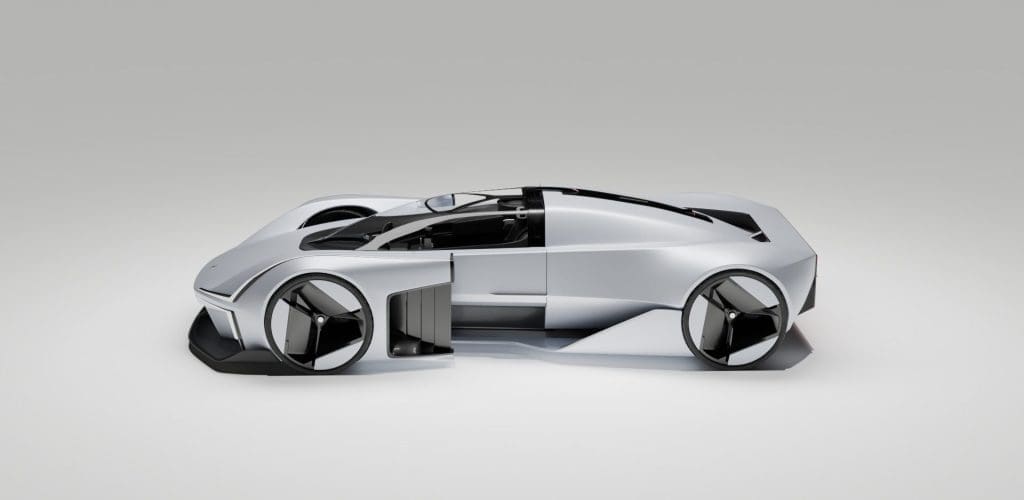
Product rendering can change the way you develop and showcase products in today’s competitive market. By offering lifelike and immersive visuals, it allows customers to explore every detail of a product with unmatched clarity.
This approach not only enhances customer confidence but also drives engagement and boosts sales. Studies reveal that businesses using interactive 3D product visuals see up to a 40% increase in conversion rates and a 27% rise in average order value. With high-quality product rendering, you can create compelling visuals that resonate with modern e-commerce strategies and deliver exceptional results.
Key Takeaways
3D rendering can significantly boost your sales, with businesses reporting up to a 40% increase in conversion rates by using interactive visuals.
This technology allows for detailed product visualization, helping customers feel more confident in their purchase decisions by showcasing every angle and feature.
Unlike traditional photography, 3D rendering is cost-effective and flexible, enabling quick updates and customization without the need for physical prototypes.
Utilizing 3D rendering enhances customer engagement by providing immersive experiences, allowing users to interact with products in real-time.
Investing in high-quality 3D renders can improve your brand’s visibility and reputation, making your products stand out in a competitive market.
Effective 3D rendering requires attention to detail, including realistic textures and lighting, to create visuals that resonate with your audience.
Collaborating with skilled 3D artists and selecting the right software can elevate the quality of your renders, ensuring they align with your marketing goals.
What is 3D Rendering for Product Marketing?
Definition of 3D Product Rendering
3D product rendering is the process of creating highly detailed, lifelike images of products using specialized software. Instead of relying on traditional photography, this technique uses 3D models to generate visuals that showcase every angle, texture, and feature of a product. These renderings can be photorealistic or stylized, depending on the marketing goals. By leveraging this technology, you can present your products in a way that feels tangible and real, even in a digital environment.
3D product rendering has become a cornerstone of modern marketing strategies, enabling businesses to create visuals that captivate audiences and communicate product value effectively.
Importance of Product Visualization in Marketing
Product visualization plays a important role in influencing customer decisions, especially when shopping online. When customers can see a product in detail, they feel more confident about their purchase. High-quality visuals allow you to highlight key features, demonstrate functionality, and even showcase variations like colors or materials. This level of detail helps bridge the gap between online shopping and in-person experiences.
For example, imagine you’re selling a customizable piece of furniture. With 3D product rendering, you can show customers how the item looks in different finishes or settings. This not only enhances their shopping experience but also builds trust in your brand. Studies show that businesses investing in advanced product visualization often see higher engagement rates and improved sales performance.
How 3D Rendering Differs from Traditional Photography
While traditional photography has long been a staple in marketing, 3D rendering offers unique advantages that set it apart. Photography requires physical prototypes, studio setups, and extensive editing to achieve the desired results. In contrast, 3D rendering eliminates these limitations by creating visuals directly from digital models.
Here are some key differences:
Flexibility: 3D rendering allows you to make changes quickly, such as altering colors, textures, or angles, without needing to reshoot.
Cost-Effectiveness: You can save on production costs by avoiding physical prototypes and studio expenses.
Customization: Renderings can showcase multiple product variations or configurations, making them ideal for e-commerce platforms.
Realism: Advanced rendering techniques can produce visuals that rival or even surpass traditional photography in quality.
By adopting 3D product rendering, you gain the ability to create visuals that not only look stunning but also adapt to your marketing needs. This approach ensures that your products stand out in a crowded marketplace.
Key Steps in 3D Rendering for Marketing
Product Modeling
The first step in 3D rendering involves creating digital 3D models of your product. This process starts with designing a virtual representation of the product using specialized software. You define the shape, dimensions, and structure to ensure accuracy. The goal is to replicate the physical product as closely as possible.
For example, if you’re marketing a pair of headphones, you would model every component, from the ear cushions to the headband. Precision is key here. A well-crafted model lays the foundation for producing realistic images that captivate your audience. By focusing on details, you can highlight unique features that set your product apart.
Texturing and Material Application
Once the model is complete, the next step is applying textures and materials. This stage brings your product to life by adding surface details like colors, patterns, and finishes. Texturing allows you to showcase the product’s material properties, such as the smoothness of metal or the softness of fabric.
For instance, if you’re rendering a leather bag, you can use textures to emphasize the grain and stitching. Material application ensures that the product looks authentic and visually appealing. This step plays a crucial role in creating photorealistic images that resonate with customers. High-quality textures make your product feel tangible, even in a digital space.
Lighting and Rendering
Lighting is the final touch that transforms your 3D model into a stunning visual. Proper lighting enhances the product’s appearance by highlighting its shape, texture, and details. You can experiment with different lighting setups to create the desired mood or effect. For example, soft lighting can make a product look elegant, while dramatic lighting adds a sense of luxury.
Rendering is the process of generating the final image from the 3D model. This step combines all elements—modeling, texturing, and lighting—to produce a cohesive visual. Advanced rendering techniques allow you to create images that rival traditional photography in quality. The result is a polished, professional image ready for marketing use.
“With 3D rendering marketing, you can adjust the lighting, colors, textures, etc., at a much more cost-effective rate than with photography.” This flexibility makes it easier to adapt visuals to different campaigns or platforms.
By mastering these steps, you can create visuals that not only look stunning but also effectively communicate your product’s value.
Post-Processing and Final Touches
Post-processing is the stage where your 3D render truly comes to life. This step refines the raw render, enhancing its visual appeal and ensuring it aligns with your marketing goals. By focusing on details, you can transform a good render into an exceptional one that captivates your audience.
1. Adjusting Colors and Contrast
Fine-tuning colors and contrast helps create a balanced and visually striking image. You can enhance the vibrancy of your product’s colors or adjust the contrast to make key features stand out. Tools like Adobe Photoshop or specialized rendering software allow you to tweak these elements with precision. A well-balanced image ensures your product looks realistic and appealing across different platforms.
“With 3D rendering marketing, you can adjust the lighting, colors, textures, etc., at a much more cost-effective rate than with photography.” This flexibility allows you to perfect your visuals without additional expenses.
2. Adding Backgrounds and Context
A plain background may not always convey the full potential of your product. Adding a suitable background or placing your product in a realistic setting can elevate its presentation. For example, a 3D render of a chair can look more inviting when placed in a cozy living room scene. Contextual backgrounds help customers visualize how the product fits into their lives, making it more relatable and desirable.
3. Enhancing Realism with Effects
Subtle effects like shadows, reflections, and depth of field can significantly enhance the realism of your render. Shadows add dimension, reflections create a polished look, and depth of field draws attention to specific areas of the product. These effects mimic real-world photography, making your render more immersive and engaging.
4. Optimizing for Multiple Platforms
Your 3D render should look stunning whether it’s displayed on a website, social media, or in print. Optimize the resolution and file format to ensure compatibility with various platforms. High-resolution images work well for print materials, while compressed formats are ideal for faster loading on websites. Testing your visuals on different devices ensures consistent quality across all channels.
5. Reviewing and Iterating
Before finalizing your render, review it thoroughly. Look for any inconsistencies or areas that need improvement. Gather feedback from your team or even potential customers to identify opportunities for refinement. Iteration is key to achieving a flawless result. Each adjustment brings you closer to a render that not only looks amazing but also resonates with your target audience.
By dedicating time to post-processing, you ensure your 3D renders meet the highest standards of quality. This attention to detail can make a significant difference in how your product is perceived, ultimately driving customer engagement and boosting sales.
Applications of 3D Rendering in Product Marketing
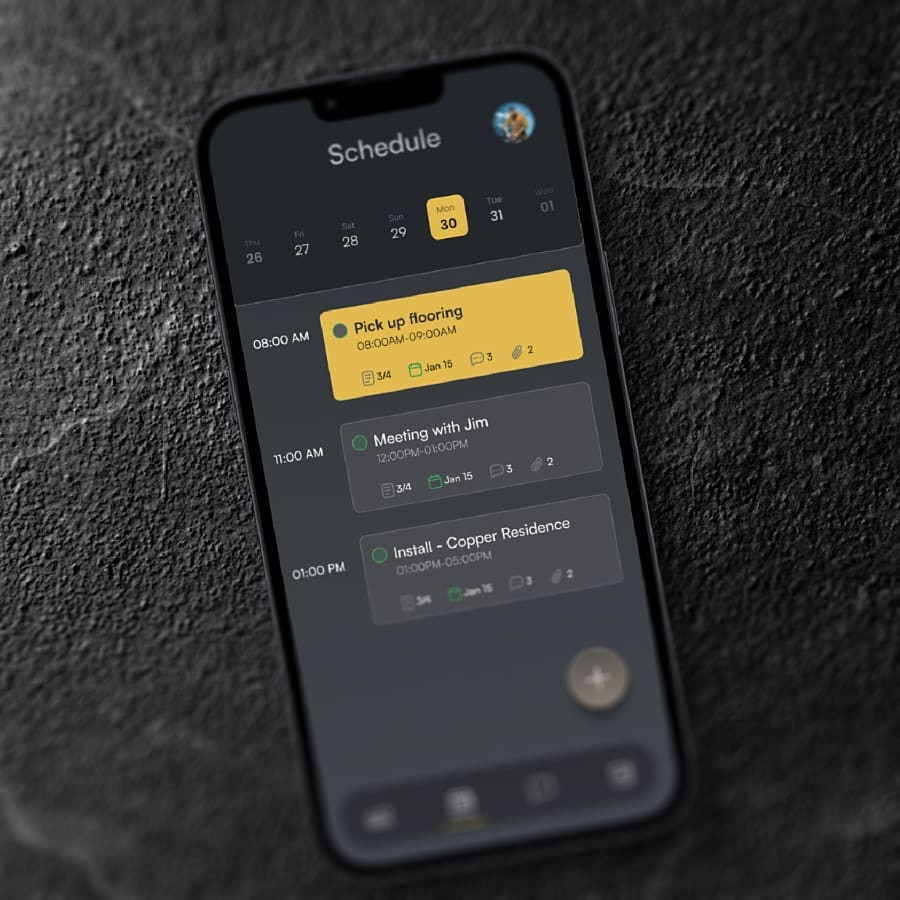
Prototyping and Product Development
3D product rendering plays a pivotal role in prototyping and product development. It allows you to visualize your product before it even exists physically. By creating detailed digital models, you can test designs, identify flaws, and make improvements without the need for costly physical prototypes. This process accelerates development timelines and reduces expenses.
For instance, if you’re designing a new smartwatch, 3D rendering lets you experiment with different shapes, materials, and colors. You can see how the product will look and function in real-world scenarios. This approach ensures that your final product meets customer expectations while maintaining high-quality standards.
“Marketers use 3D rendering to present anything virtually so that all the perks, benefits, and features can be highlighted visually.” This capability makes it an invaluable tool for refining product designs and showcasing their potential.
Advertising and Branding Campaigns
In advertising and branding, 3D product rendering enables you to create stunning visuals that captivate your audience. You can produce high-impact images and videos that highlight your product’s unique features. These visuals can be used across various platforms, including commercials, social media, and print materials.
For example, a sportswear brand could use 3D renders of their latest sneakers to demonstrate versatility. A single render can show the product thriving in different environments, such as snow, sand, or urban streets. This flexibility eliminates the need for multiple photoshoots, saving time and resources.
“With 3D product renders, advertisers can create stunning marketing images for commercials and social media posts without ever touching a camera.” This efficiency allows you to focus on crafting compelling campaigns that resonate with your target audience.
Moreover, 3D rendering enhances brand visibility by delivering high-fidelity graphics that leave a lasting impression. Visual metaphors, such as transforming a stressed worker into a confident one, can effectively communicate your brand’s message. These creative visuals not only attract attention but also build a strong emotional connection with your audience.
Ecommerce Product Visualization
For ecommerce brands, 3D product rendering revolutionizes how products are showcased online. It bridges the gap between physical and digital shopping experiences by offering lifelike visuals that customers can interact with. You can display products from multiple angles, zoom in on details, and even demonstrate functionality.
Imagine selling a customizable sofa. With 3D rendering, you can let customers explore different fabric options, colors, and configurations. This level of personalization enhances the shopping experience and increases customer confidence in their purchase decisions.
“In the visually driven digital era, 3D visualizations have emerged as potent marketing instruments.” They allow ecommerce brands to highlight product features and benefits in ways that traditional photography cannot match.
Additionally, 3D product rendering reduces the likelihood of returns by providing accurate representations of your products. Customers know exactly what to expect, which builds trust and satisfaction. This approach not only boosts sales but also strengthens your brand’s reputation in the competitive ecommerce landscape.
Customization and Personalization for Customers
3D rendering empowers you to offer customers a tailored shopping experience that feels personal and engaging. By leveraging this technology, you can showcase products in ways that align with individual preferences, creating a deeper connection between your brand and your audience.
1. Visualizing Product Variations
With 3D rendering, you can display multiple variations of a product without the need for physical prototypes. Whether it’s different colors, materials, or configurations, you can let customers explore all options effortlessly. For instance, if you sell customizable sneakers, you can allow users to see how their chosen color combinations and patterns look in real-time. This interactive approach enhances decision-making and builds confidence in their purchase.
“Marketers use 3D rendering to present anything virtually so that all the perks, benefits, and features can be highlighted visually.” This capability ensures that customers fully understand the versatility of your products.
2. Creating Immersive Shopping Experiences
3D rendering transforms the online shopping experience into something immersive and memorable. Customers can rotate products, zoom in on intricate details, and even visualize items in specific environments. For example, a furniture retailer could let users place a virtual sofa in their living room to see how it fits with their décor. This level of interaction bridges the gap between digital and physical shopping, making the process more intuitive and enjoyable.
3. Enhancing Emotional Engagement
Personalization fosters a sense of ownership and emotional attachment. When customers can customize a product to their liking, they feel more invested in their purchase. For example, allowing users to engrave their name on a product or select unique design elements creates a meaningful connection. This emotional engagement not only increases the likelihood of a sale but also strengthens brand loyalty.
4. Reducing Uncertainty and Returns
Accurate and detailed 3D renders reduce the guesswork for customers. They can see exactly what they’re buying, which minimizes the risk of misaligned expectations. This transparency builds trust and significantly lowers return rates. For e-commerce businesses, fewer returns mean cost savings and happier customers.
5. Catering to Modern Consumer Expectations
In today’s visually driven digital era, customers expect brands to deliver high-quality, interactive content. 3D rendering meets these expectations by providing dynamic visuals that captivate and inform. Brands that embrace this technology stand out in competitive markets and attract more attention from tech-savvy consumers.
By integrating customization and personalization into your marketing strategy, you can create a shopping experience that resonates with your audience. 3D rendering not only enhances how customers perceive your products but also elevates their overall satisfaction, driving long-term success for your brand.
Benefits of Using 3D Rendering in Marketing
Cost-Effectiveness Compared to Traditional Methods
3D rendering offers a cost-effective alternative to traditional methods like photography. You no longer need to invest in physical prototypes, elaborate studio setups, or multiple photoshoots. Instead, you can create realistic images directly from digital models. This streamlined process reduces production costs while maintaining high-quality visuals.
With 3D rendering, you can also test product variations without additional expenses. For example, if you want to showcase a product in different colors or materials, you can modify the digital model instead of producing multiple physical samples. This flexibility saves time and resources, making it an ideal solution for businesses looking to optimize their marketing budgets.
“Businesses use 3D rendering to visualize and refine product concepts before physical production, transforming technical drawings into detailed digital models for exploring various iterations and materials.”
By adopting 3D rendering, you gain the ability to produce stunning visuals at a fraction of the cost, giving you a competitive edge in the market.
Enhanced Customer Engagement Through Immersive Visuals
3D rendering allows you to create photorealistic images that captivate your audience. These visuals provide a level of detail and realism that traditional photography often cannot achieve. Customers can view products from any angle, zoom in on intricate details, and even see how items look in different environments. This immersive experience fosters a deeper connection between the customer and the product.
For instance, imagine showcasing a piece of furniture. With 3D rendering, you can let customers visualize the item in various room settings, helping them see how it fits into their lives. This interactive approach not only grabs attention but also builds confidence in their purchase decisions.
“Marketers use 3D rendering to present anything virtually so that all the perks, benefits, and features can be highlighted visually.”
By engaging customers with lifelike visuals, you enhance their shopping experience and increase the likelihood of conversions.
Flexibility in Updating and Customizing Visuals
One of the most significant advantages of 3D rendering is its flexibility. Unlike traditional methods, you can easily update or customize visuals to meet changing marketing needs. Whether you want to adjust lighting, change textures, or showcase new product features, 3D rendering makes it possible without starting from scratch.
For example, if you launch a new product variation, you can quickly modify the existing digital model to reflect the changes. This adaptability ensures that your visuals stay relevant and aligned with your marketing goals. Additionally, you can repurpose the same 3D model across multiple platforms, from websites to social media, ensuring consistent branding.
“3D rendering offers faster production time, allows viewing products from any angle and in any environment, provides superior control, endless possibilities, and creativity compared to traditional photography.”
This level of flexibility empowers you to respond to market trends and customer preferences with ease, keeping your brand ahead of the competition.
Improved Communication with Stakeholders and Teams
3D rendering enhances how you communicate product ideas and concepts to stakeholders and team members. It provides a clear and detailed visual representation of your product, making it easier for everyone involved to understand its design, features, and potential. This clarity eliminates misunderstandings and ensures that all parties stay aligned throughout the development and marketing process.
1. Visualizing Concepts with Precision
With 3D rendering, you can present product concepts in a way that feels tangible and real. Unlike traditional sketches or technical drawings, 3D visuals showcase every angle, texture, and detail of your product. This level of precision helps stakeholders grasp the full scope of your vision without requiring extensive explanations.
“Businesses use 3D rendering to visualize and refine product concepts before physical production, transforming technical drawings into detailed digital models for exploring various iterations and materials.”
For example, if you’re pitching a new product design to investors, a photorealistic 3D render can make your presentation more compelling. It allows them to see exactly what you’re proposing, which builds confidence in your ideas and fosters productive discussions.
2. Streamlining Collaboration Across Teams
3D rendering simplifies collaboration by providing a centralized visual reference for all teams. Designers, marketers, and engineers can work together more effectively when they share a clear understanding of the product. This shared perspective reduces the risk of miscommunication and ensures that everyone contributes to a cohesive final result.
Design Teams: Use 3D renders to test different variations and refine the product’s appearance.
Marketing Teams: Leverage the visuals to plan campaigns and create promotional materials.
Engineering Teams: Analyze the renders to identify potential manufacturing challenges.
By integrating 3D rendering into your workflow, you create a seamless communication channel that keeps all teams on the same page.
3. Accelerating Decision-Making Processes
When stakeholders and teams have access to detailed 3D visuals, they can make decisions faster and with greater confidence. The ability to view products from multiple angles and in various environments provides a comprehensive understanding that static images or descriptions cannot match. This accelerates approval processes and keeps projects moving forward.
For instance, if you’re deciding between two material options for a product, 3D rendering allows you to compare them side by side. Stakeholders can see how each material looks and performs in different scenarios, enabling informed choices without delays.
4. Supporting Iterative Feedback and Revisions
3D rendering makes it easy to incorporate feedback and iterate on designs. You can quickly adjust colors, textures, or features based on input from stakeholders or team members. This flexibility ensures that the final product meets everyone’s expectations while minimizing the time and cost associated with revisions.
“3D rendering offers faster production time, allows viewing products from any angle and in any environment, provides superior control, endless possibilities, and creativity compared to traditional photography.”
For example, if a stakeholder requests a change to the product’s design, you can update the 3D model and share the revised render within hours. This rapid turnaround keeps the project on track and demonstrates your commitment to collaboration.
5. Bridging the Gap Between Vision and Execution
3D rendering acts as a bridge between your initial concept and the final product. It translates abstract ideas into concrete visuals that everyone can understand and support. This alignment ensures that your vision remains intact from the planning stage to the finished product.
By using 3D rendering to improve communication, you empower your team to work more efficiently and effectively. Stakeholders gain a clearer understanding of your goals, and teams collaborate with greater precision. This streamlined approach not only saves time but also enhances the quality of your product and marketing efforts.
Tips for Effective 3D Rendering in Marketing
Selecting the Right 3D Rendering Software
Choosing the right software is crucial for creating high-quality 3D renders. The software you select should align with your specific needs and the complexity of your projects. Popular options like V-Ray, Blender, and Autodesk 3DS Max offer robust tools for producing photorealistic visuals. Each program comes with unique features, so understanding their capabilities will help you make an informed decision.
When evaluating software, consider factors such as ease of use, rendering speed, and compatibility with your existing tools. For instance, if you need to create detailed textures or intricate lighting effects, look for software that excels in those areas. Many programs also offer trial versions, allowing you to test their functionality before committing.
“The right 3D rendering software can significantly impact the quality and efficiency of your marketing visuals.”
By investing in the right tools, you ensure your renders meet professional standards and captivate your audience.
Collaborating with Skilled 3D Artists or Teams
Working with experienced 3D artists or teams can elevate the quality of your renders. Skilled professionals bring technical expertise and creative vision to your projects, ensuring the final visuals align with your brand’s goals. Whether you hire freelancers or partner with a dedicated team, collaboration plays a key role in achieving exceptional results.
To find the right talent, review portfolios and assess their experience with similar projects. Clear communication is essential during the collaboration process. Share your expectations, provide detailed briefs, and offer constructive feedback to guide the creative direction. This approach fosters a productive partnership and ensures the final output reflects your vision.
Benefits of collaborating with experts:
Access to advanced techniques and tools.
Faster turnaround times for complex projects.
High-quality visuals that resonate with your target audience.
“A skilled 3D artist can transform your ideas into stunning visuals that drive customer engagement.”
By leveraging the expertise of professionals, you enhance the impact of your marketing campaigns and build a stronger connection with your audience.
Prioritizing Realism and Attention to Detail
Realism is a cornerstone of effective 3D rendering. Customers expect visuals that accurately represent the product, down to the smallest detail. Prioritizing realism not only enhances the credibility of your brand but also builds trust with your audience. When customers see lifelike renders, they feel more confident in their purchase decisions.
To achieve realism, focus on elements like textures, lighting, and shadows. High-quality textures replicate the look and feel of materials, while proper lighting highlights the product’s features. Subtle details, such as reflections and depth of field, add authenticity to your renders. These elements work together to create visuals that feel tangible and immersive.
“Attention to detail transforms a good render into an exceptional one.”
For example, if you’re showcasing a leather bag, emphasize the grain, stitching, and sheen of the material. These details make the product appear more lifelike and appealing. By prioritizing realism, you create visuals that not only attract attention but also inspire confidence in your brand.
Optimizing Visuals for Multiple Platforms
Your 3D renders must perform well across various platforms to maximize their impact. Each platform has unique requirements, and optimizing visuals ensures they look professional and engaging everywhere. Whether you’re targeting websites, social media, or print materials, tailoring your renders to fit each medium is essential.
1. Adjusting Resolution and File Formats
Different platforms demand specific resolutions and file formats. High-resolution images work best for print materials, while compressed formats like JPEG or PNG are ideal for websites and social media. Ensure your renders maintain clarity and detail, regardless of the platform. For example, a product render on Instagram should load quickly without sacrificing quality, while a catalog image should showcase intricate details for print.
“Optimizing resolution ensures your visuals remain sharp and professional, no matter where they appear.”
2. Adapting Aspect Ratios
Each platform has preferred aspect ratios for images and videos. Social media platforms like Instagram favor square or vertical formats, while websites often require horizontal layouts. Adjust your renders to match these specifications. This small step prevents cropping or distortion, ensuring your product looks its best.
3. Enhancing Mobile Compatibility
Many customers browse products on mobile devices. Optimize your visuals for smaller screens by ensuring they load quickly and remain clear. Test your renders on various devices to confirm they display correctly. A mobile-friendly render can significantly improve user experience and engagement.
4. Customizing for Platform-Specific Features
Leverage platform-specific features to enhance your renders. For instance, use interactive 3D models on e-commerce websites to allow customers to rotate and zoom in on products. On social media, create short animations or videos showcasing your product’s features. These tailored approaches make your visuals more engaging and effective.
5. Testing Across Platforms
Before publishing, test your renders on all intended platforms. Check for issues like slow loading times, pixelation, or improper cropping. Testing ensures your visuals meet the highest standards and deliver a consistent experience across channels.
By optimizing your 3D renders for multiple platforms, you ensure they captivate your audience wherever they encounter your brand. This attention to detail enhances your marketing efforts and strengthens your product’s appeal.
Testing and Iterating Based on Feedback
Testing and iteration are crucial for refining your 3D renders. Feedback from your audience and team helps identify areas for improvement, ensuring your visuals resonate with your target market. A systematic approach to testing and iteration can elevate the quality of your renders and boost their effectiveness.
1. Gathering Audience Feedback
Engage your audience to gather insights about your renders. Use surveys, polls, or focus groups to understand their preferences. For example, ask customers if the visuals accurately represent the product or if they find them engaging. Their input provides valuable direction for improvements.
“Customer feedback is a powerful tool for refining your visuals and aligning them with audience expectations.”
2. Collaborating with Teams
Involve your design, marketing, and sales teams in the review process. Each team offers unique perspectives that can enhance your renders. Designers may suggest technical adjustments, while marketers can provide insights into audience preferences. Collaboration ensures your visuals meet both creative and strategic goals.
3. Testing Variations
Experiment with different versions of your renders to determine what works best. Test variations in lighting, textures, or angles to see which resonates most with your audience. For instance, you might find that a brighter render performs better on social media, while a more subdued version suits your website.
4. Analyzing Performance Metrics
Track the performance of your renders using analytics tools. Monitor metrics like engagement rates, click-through rates, and conversion rates to assess their impact. Use this data to identify successful elements and areas for improvement.
5. Iterating for Continuous Improvement
Use the feedback and data you’ve gathered to refine your renders. Make adjustments to address any issues and enhance their appeal. Iteration is an ongoing process that ensures your visuals stay relevant and effective.
By testing and iterating, you create 3D renders that not only look stunning but also drive results. This commitment to improvement keeps your visuals aligned with audience expectations and marketing goals.
How LaunchBox’s 3D Product Rendering Can Transform Your Marketing
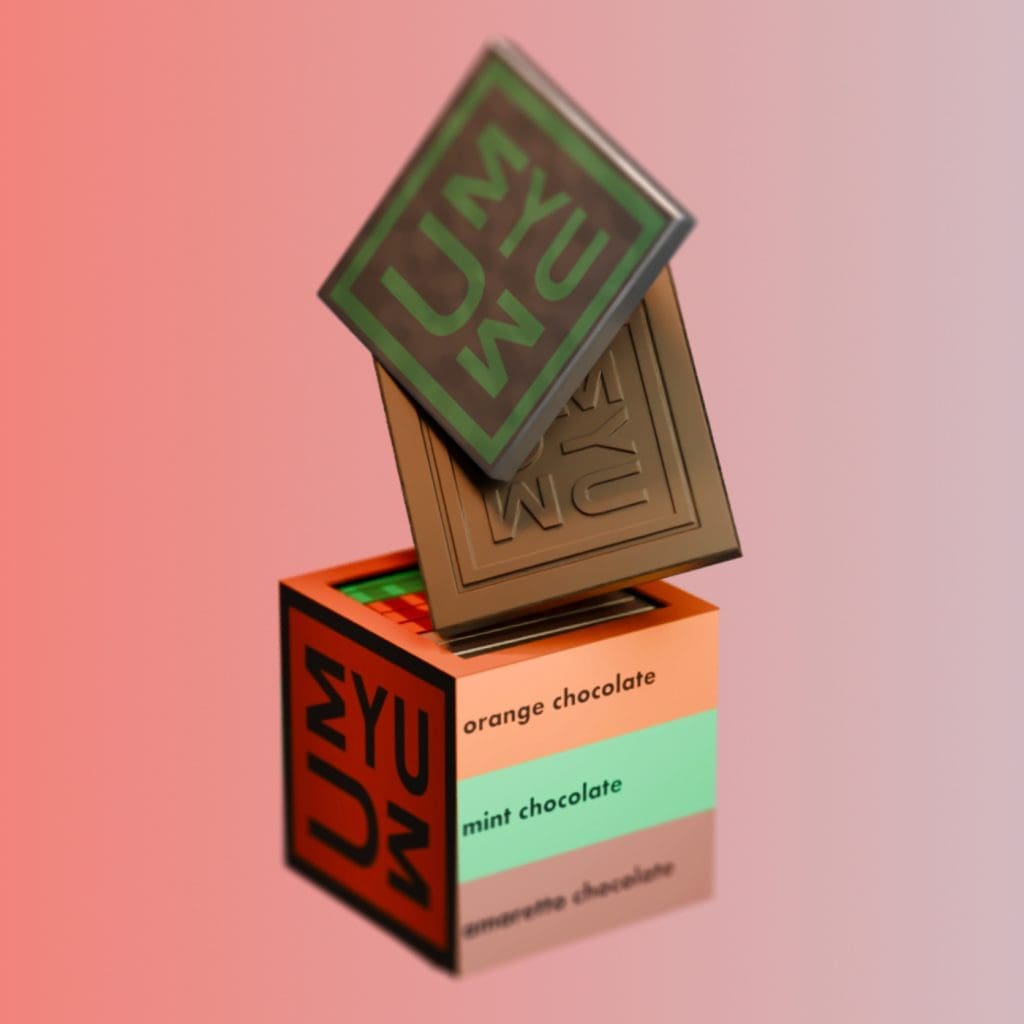
Enhancing Product Visibility Through 3D Rendering
Showcasing Product Details with Precision
LaunchBox’s 3D product rendering allows you to present your products with unmatched precision. Every detail, from textures to intricate design elements, becomes visible in a way that traditional photography cannot achieve. This level of clarity ensures that your customers fully understand the value and quality of your product before making a purchase.
For example, if you sell luxury watches, 3D rendering can highlight the craftsmanship of the dial, the sheen of the metal, and even the stitching on the leather strap. Customers can zoom in to examine these details, which builds trust and confidence in their buying decisions. According to recent surveys, 80% of online shoppers prefer seeing products in 3D because it provides a more comprehensive view compared to static images.
By showcasing your product’s features with such precision, you not only enhance its appeal but also set your brand apart in a competitive market.
Capturing Customer Attention Effectively
In today’s crowded digital landscape, grabbing and holding customer attention is critical. LaunchBox’s 3D product rendering helps you achieve this by creating visuals that are both dynamic and engaging. Unlike flat images, 3D renders allow customers to interact with your product, exploring it from every angle. This interactive experience keeps them engaged longer and increases the likelihood of conversion.
E-commerce websites that incorporate interactive 3D visuals have reported a 40% increase in conversion rates compared to those using traditional images. This statistic highlights the power of 3D rendering in capturing attention and driving sales. Whether you’re showcasing a new product launch or updating your online catalog, 3D visuals ensure your products stand out and leave a lasting impression.
Boosting Customer Engagement with Dynamic Visuals
Interactive Product Exploration
LaunchBox’s 3D product rendering transforms the way customers interact with your products. Instead of relying on static images, you can offer an immersive experience where customers can rotate, zoom, and explore your product in detail. This level of interaction bridges the gap between online and in-person shopping, making the digital experience more tangible and satisfying.
For instance, imagine selling customizable furniture. With 3D rendering, customers can visualize how a sofa looks in different fabrics, colors, or configurations. They can rotate the model to see it from all angles, ensuring it fits their preferences and space. This interactive exploration not only enhances engagement but also reduces uncertainty, leading to more confident purchase decisions.
“3D product rendering typically increases conversion rates by 30-40% by providing customers with detailed, interactive product views that build confidence in purchase decisions.”
By offering this level of interactivity, you create a shopping experience that feels personal and engaging, which ultimately drives customer satisfaction and loyalty.
Creating Memorable Shopping Experiences
Memorable shopping experiences are key to building strong customer relationships, and LauchBox’s 3D product rendering helps you achieve this. By combining lifelike visuals with interactive features, you can create an experience that customers will remember and share. This not only boosts engagement but also strengthens your brand’s reputation.
For example, a retailer selling high-end sneakers could use 3D rendering to let customers customize their shoes in real-time. They could choose colors, materials, and even add personalized details like initials. This level of personalization creates an emotional connection, making the shopping experience more enjoyable and memorable.
Additionally, 3D rendering reduces the likelihood of returns by providing accurate representations of your products. Customers know exactly what to expect, which builds trust and satisfaction. In a competitive e-commerce landscape, delivering a memorable and reliable shopping experience can set your brand apart and drive long-term success.
3D rendering has transformed product marketing by offering a powerful way to communicate ideas and showcase products with unmatched clarity. It enables you to create lifelike visuals that captivate audiences, improve customer engagement, and streamline communication with stakeholders. By reducing costs, enhancing flexibility, and delivering immersive experiences, product rendering empowers your brand to stand out in competitive markets.
Explore LaunchBox’s 3D Product Rendering to elevate your marketing strategies. With its precision and innovation, you can unlock new opportunities to connect with your audience and drive success.
FAQ
What is 3D product rendering?
3D product rendering is the process of creating lifelike images of products using specialized software. It transforms digital 3D models into visuals that showcase every detail, including textures, colors, and angles. Unlike traditional photography, 3D rendering allows you to present products in dynamic and customizable ways, making it a powerful tool for marketing.
“Visual aids such as renders, wireframes, and exploded views are powerful tools for communicating complex design decisions.” – Expert in 3D Modeling and Design
How does 3D rendering benefit product marketing?
3D rendering enhances product marketing by offering flexibility, cost savings, and immersive visuals. You can showcase products from multiple angles, highlight intricate details, and even create interactive experiences. These features help you engage customers, build trust, and increase sales.
Is 3D rendering better than traditional photography?
Yes, 3D rendering offers several advantages over traditional photography. It eliminates the need for physical prototypes and studio setups, saving time and money. You can also easily update or customize visuals without reshooting. Additionally, 3D renders can achieve a level of precision and realism that often surpasses traditional photography.
Can 3D rendering be used for all types of products?
Yes, 3D rendering works for a wide range of products, from electronics and furniture to clothing and jewelry. It is especially useful for showcasing complex or customizable items. For example, you can use 3D rendering to display different color options, materials, or configurations of a product.
What software is commonly used for 3D rendering?
Popular 3D rendering software includes V-Ray, Blender, Autodesk 3DS Max, and Octane Render. Each program offers unique features suited to different needs. For instance, V-Ray excels in photorealistic rendering, while Blender provides a versatile platform for both beginners and professionals.
“The right 3D rendering software can significantly impact the quality and efficiency of your marketing visuals.”
How long does it take to create a 3D render?
The time required to create a 3D render depends on the complexity of the product and the level of detail needed. Simple renders may take a few hours, while intricate designs with advanced textures and lighting can take several days. Collaborating with skilled 3D artists can streamline the process.
Can 3D renders be used across different platforms?
Yes, 3D renders can be optimized for various platforms, including websites, social media, and print materials. Adjusting resolution, file formats, and aspect ratios ensures that your visuals look professional and engaging on every platform. Testing across devices helps maintain consistent quality.
How does 3D rendering improve customer engagement?
3D rendering creates immersive and interactive visuals that captivate customers. Features like zooming, rotating, and exploring products in detail make the shopping experience more engaging. This level of interaction builds confidence in purchase decisions and fosters a stronger connection with your brand.
Is 3D rendering cost-effective for small businesses?
Yes, 3D rendering is a cost-effective solution for businesses of all sizes. It reduces the need for physical prototypes and photoshoots, saving time and resources. You can also reuse and update digital models for future campaigns, maximizing your investment.
How can I get started with 3D product rendering?
To get started, choose the right 3D rendering software or partner with experienced 3D artists. Define your goals, gather product specifications, and create detailed briefs to guide the process. If you’re looking for professional assistance, consider services like LaunchBox to ensure high-quality results tailored to your marketing needs.
